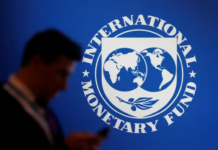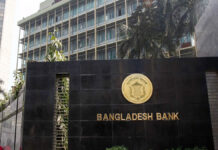

Nearly 8 lakh migrant workers went abroad in the first 10 months of the current fiscal year, comfortably exceeding the numbers a year ago, a development that bodes well for Bangladesh as it could pave the way for higher remittance earnings.
An increased flow of money transfer from the migrant workers will be key in the coming months as abnormally high imports against moderate exports have created an exchange rate volatility in the country amid costly commodities in the global markets.
Data from the state-run Bureau of Manpower, Employment and Training (BMET) showed that 7.99 lakh migrant workers moved to other countries in search of jobs between July and April.
It is already more than double 2.8 lakh workers who went overseas in the fiscal year of 2020-2021 and the highest in the last four years. The last fiscal year saw a drastic fall in overseas employment as most economies enforced frequent lockdowns to limit the impacts of the coronavirus pandemic.
Although a large number of workers are going abroad as global economies have reopened thanks to the improving coronavirus situation, Bangladesh might have to wait for some time to benefit from higher migration, experts and sector insiders say.
This is because migrant workers are likely to see a drop in their purchase power amid escalating global inflation fuelled by the Russia-Ukraine war. Besides, fresh migrants usually need months to start saving and supporting their families back home by sending remittances.
Bangladesh is likely to see an increase in inward remittance in the near future despite global turmoil.
Zahid Hussain, a former lead economist at the World Bank’s Dhaka office, describes the high number of migrant workers living in various countries as the “main pillar” of Bangladesh’s remittance.
Currently, about one crore Bangladeshi expatriates live in more than 160 countries.
“There is an increasing trend in the number and it is unlikely that the number will drop in the days to come since global demand for low-skilled workers has increased as countries are rebounding from the pandemic,” Hussain said.
He thinks fresh Bangladeshi migrant workers may require five to eight months, depending on destinations, to begin saving.
BMET data showed 1.02 lakh migrant workers went overseas in November.
Some 4.26 lakh went abroad in April alone. Of them, 2.68 lakh workers went to Saudi Arabia, 56,830 to Oman, and 51,531 to the United Arab Emirates (UAE).
Most of the new migrant workers heading to Saudi Arabia and the UAE are recruited under four to five categories, including construction, cleaning, maintenance and driving, said Shameem Ahmed Chowdhury Noman, a former secretary-general of the Bangladesh Association of International Recruiting Agencies.
“Economic activities have accelerated in the host countries. So, it is a good sign that Bangladesh is sending a high number of migrant workers abroad amid the ongoing global recovery,” he said.
Saudi Arabia and the UAE are among the countries that are benefiting from higher oil prices.
The Gulf Cooperation Council’s (GCC) economic growth will accelerate this year to a pace not seen in a decade, according to a Reuters poll of economists. The council comprises Saudi Arabia, Kuwait, the UAE, Qatar, Bahrain, and Oman.
Noman says higher migration will push up remittance within six months.
Between July and April, migrant workers sent home $17.30 billion, down 16.2 per cent year-on-year, data from the Bangladesh Bank showed. Remittance receipts stood at $24.7 billion in FY21.
The World Bank in its latest report said remittances in Bangladesh grew by 2.2 per cent to $22 billion in 2021 and are anticipated to gain 2 per cent in 2022.
In Bangladesh, except for a 24 per cent spike in March 2022 because of Ramadan, monthly remittance growth has been decreasing for the past eight months.
Last year, Bangladesh saw an increase of about Tk 600 crore in inward remittance which was “extraordinary” amid the pandemic, according to Hussain.
He thinks the annual remittance flow of $18 billion is somewhat “normal” for Bangladesh that the country used to receive before the pandemic.
With the global economy returning to normalcy, it will not take long to see Bangladesh’s annual remittance reaching $20 billion to $22 billion, he added.
Although there could be temporary concerns over Bangladesh’s remittance flow because of the Ukraine crisis, new Covid-19 variants, and higher inflation globally, such worries are unlikely to persist long, the economist added.
Shariful Hasan, head of Brac’s migration programme, said the growth in migrant workers is positive for remittance and creating employment since nearly two million people enter the country’s job market each year.
Referring to government data, he, however, said migrant workers from Bangladesh require nearly 18 months to recover the migration cost.
“Bangladesh could earn $25 billion to $30 billion in remittance annually by sending more skilled workers as fresh demand for foreign workers has been created in various countries in line with the recovery from the pandemic.”









